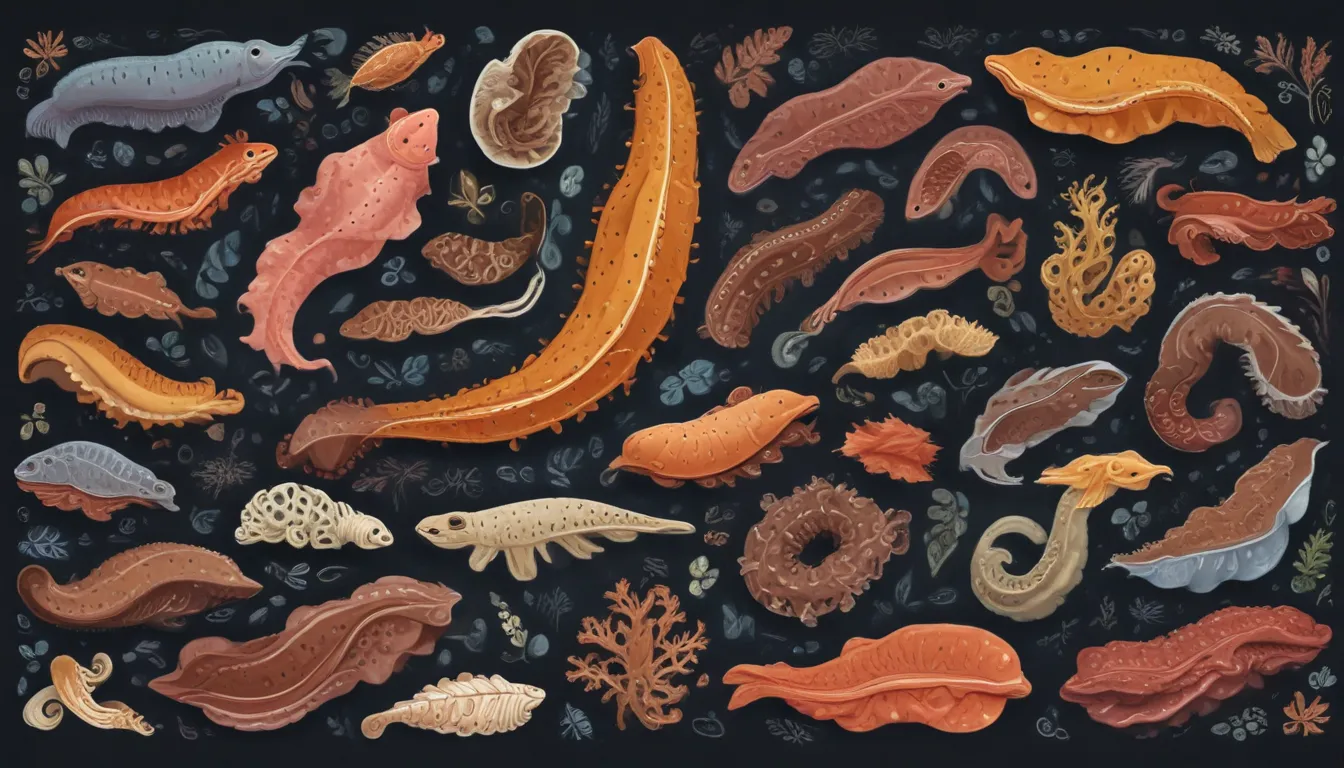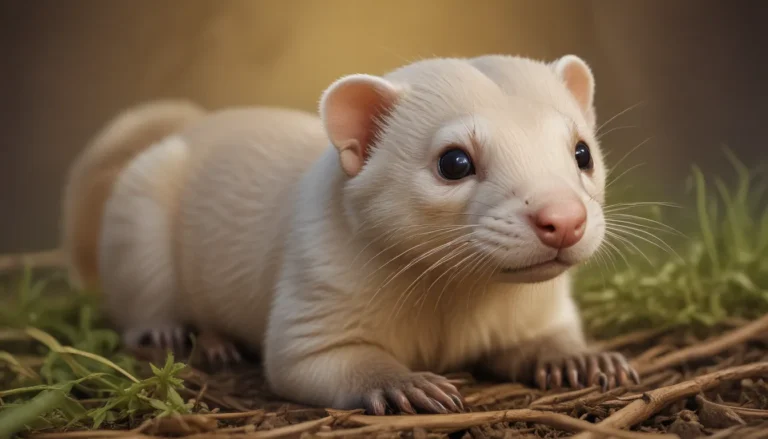The pictures we use in our articles might not show exactly what the words say. We choose these pictures to make you interested in reading more. The pictures work together with the words but don’t take their place. The words still tell you the important facts.
If you've ever encountered a flatworm, you may have been struck by their simple yet intriguing appearance. These captivating creatures, belonging to the phylum Platyhelminthes, are found in a diverse array of environments, showcasing a wide range of fascinating features and abilities. In this article, we will uncover 10 cool facts about flatworms that highlight their uniqueness and charm. From their remarkable regenerative capabilities to their vibrant colors, flatworms are truly nature's marvels that deserve our appreciation and admiration. Join us as we delve into the eccentric world of these mesmerizing invertebrates and discover the wonders they hold.
The Remarkable Regenerative Abilities of Flatworms
One of the most astonishing qualities of flatworms, also known as planarians, is their remarkable ability to regenerate. If a flatworm is cut into several pieces, each fragment has the potential to grow into a complete and functioning organism. This unparalleled regenerative prowess sets flatworms apart from many other animals and showcases their incredible adaptability in the face of adversity.
Embracing the Unique Body Shape of Flatworms
As their name suggests, flatworms exhibit a flat and elongated body shape that allows them to move effortlessly through water or burrow into substrates with ease. This characteristic physical feature not only aids in their locomotion but also contributes to their overall agility and survival in various environments.
The Fascinating Reproductive Methods of Flatworms
Flatworms possess the ability to reproduce both sexually and asexually, showcasing a diverse range of reproductive methods. Through asexual reproduction, they can rapidly increase their population without the need for a mate, highlighting their adaptive strategies for survival and proliferation in their habitats.
Unveiling the Intriguing Nervous System of Flatworms
Despite their diminutive size, flatworms boast a rudimentary nervous system comprising a network of nerves that run throughout their bodies. This neural network enables them to sense and respond to their surroundings, demonstrating a level of cognition and awareness that is truly remarkable given their simplicity.
Exploring the Phenomenon of Hermaphroditism in Flatworms
Most species of flatworms are hermaphrodites, meaning they possess both male and female reproductive organs. This unique characteristic allows them to engage in reciprocal mating, where individuals take turns acting as the male and female during reproduction, showcasing the versatility and complexity of their reproductive strategies.
Diverse Feeding Habits of Flatworms
Flatworms exhibit a wide range of feeding habits, with some species being predators, others scavengers, and some even parasitic. They feed on a variety of food sources, including small invertebrates, organic detritus, and the tissues of host organisms in the case of parasitic species, highlighting their adaptability and role in food webs.
The Vibrant Colors of Flatworms
Many flatworm species display vibrant colors, ranging from shades of red, yellow, green, and blue. These striking hues serve as warning signals to potential predators, indicating that flatworms may be toxic or unpalatable, showcasing their fascinating adaptations for defense and survival in their environments.
Navigating with Light: The Light-Sensitive Organs of Flatworms
Some flatworm species possess light-sensitive organs called ocelli, which enable them to detect and respond to changes in light intensity. This sensory adaptation aids them in navigating their surroundings and finding suitable habitats, underscoring their advanced sensory capabilities despite their seemingly simple appearance.
Adaptable Habitat Preferences of Flatworms
Flatworms are incredibly adaptable creatures that can thrive in a wide variety of habitats, including freshwater, seawater, moist soil, and even inside the bodies of host organisms. Their ability to colonize diverse environments highlights their resilience and versatility as they carve out niches in different ecosystems.
The Ecological Importance of Flatworms in Ecosystems
Despite their small size, flatworms play significant roles in ecosystems by contributing to nutrient cycling, controlling populations of smaller organisms, and serving as prey for larger animals. Their presence and interactions within food webs illustrate their essential contributions to ecosystem dynamics and biodiversity.
As we unravel the mysteries of flatworms, we are reminded of the vast diversity and complexity of the natural world. These 10 cool facts about flatworms only scratch the surface of the wonders that await discovery in the realm of invertebrates. From their regenerative marvels to their vibrant hues, flatworms continue to captivate and inspire scientists and nature enthusiasts alike, inviting us to marvel at the intricacies and adaptations of these often-overlooked organisms.
Conclusion: Celebrating the Cool and Incredible Facts About Flatworms
In conclusion, flatworms, with their unique features and abilities, stand as testament to the endless wonders of the animal kingdom. Whether you're fascinated by their regenerative capabilities, colorful displays, or diverse behaviors, there's no denying the cool and incredible facts that make flatworms so captivating. As we appreciate and learn more about these remarkable creatures, we gain a deeper understanding of the intricate web of life that surrounds us, enriching our appreciation for the beauty and complexity of the natural world.
FAQs: Exploring Common Questions About Flatworms
Q: What are flatworms?
Flatworms are invertebrate animals characterized by their flat, elongated bodies and bilateral symmetry. They belong to the phylum Platyhelminthes and encompass various species, including planarians, tapeworms, and flukes.
Q: Do all flatworms possess regenerative abilities?
Not all flatworms share the same regenerative capabilities. While some, like planarians, can regenerate from small fragments, others may have more limited regenerative abilities depending on their species.
Q: How do flatworms reproduce?
Flatworms reproduce through a combination of sexual and asexual methods. Some species are hermaphroditic, while others may engage in asexual reproduction through fragmentation or budding, showcasing a diverse range of reproductive strategies.
Q: Where can flatworms be found?
Flatworms inhabit a variety of aquatic and terrestrial habitats, including freshwater lakes, rivers, ponds, moist soil, leaf litter, and even the digestive tracts of vertebrate animals, displaying their adaptability and ubiquity in diverse environments.
Q: Are flatworms harmful to humans?
While most flatworms are harmless to humans, certain species can be parasitic and pose health risks. For example, tapeworms can infect humans through contaminated food sources, emphasizing the importance of hygiene and food safety practices.
Q: How do flatworms acquire nutrients?
Flatworms feed on a range of organic matter, such as small invertebrates, decaying material, and even other flatworms. They capture prey using their muscular mouths and digestive enzymes, facilitating nutrient acquisition and energy consumption.
Q: Do flatworms possess a centralized nervous system?
Flatworms have a centralized nervous system composed of ganglia distributed throughout their bodies. Despite lacking a true brain or specialized sensory organs, they exhibit neural complexity that enables them to sense and respond to stimuli in their environment.
Q: Can flatworms survive in extreme conditions?
Flatworms are known for their adaptability and can withstand a variety of environmental challenges, including extreme temperatures, low oxygen levels, and desiccation by entering diapause. Their resilience and flexibility contribute to their success in diverse habitats.
Q: Do flatworms have economic significance?
Flatworms have both positive and negative economic impacts, with some species aiding in pest control and others causing harm to livestock and crops. Additionally, certain flatworms are used in scientific research to explore regeneration and stem cell capabilities.
Q: Are there conservation concerns related to flatworms?
While conservation issues vary among species, threats such as habitat destruction, pollution, and invasive species pose significant risks to flatworm populations. Protecting their natural habitats and raising awareness about their ecological importance are vital steps for their preservation.
Delving into the world of flatworms reveals a tapestry of fascinating facts and intricate details that showcase the diversity and ingenuity of these captivating creatures. As we continue to explore and learn about the wonders of flatworms, we gain a deeper appreciation for the complexities and marvels of the natural world, reminding us of the beauty and diversity that surrounds us at every turn.






